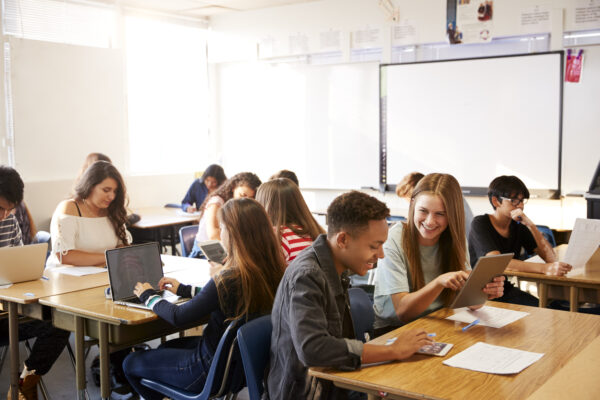Superintendents and principals have received changing and conflicting guidance from Texas officials on reopening schools. As the school year approaches and COVID-19 continues to spread, school leaders need more time, flexibility, clarity and resources to safely reopen.
Early last month, state officials said opening schools on time for face-to-face instruction was mandatory, then changed course. Now districts can stay online longer if they request — and are granted — a waiver. Meanwhile, several local health authorities issued orders mandating that schools remain closed, which Attorney General Ken Paxton said were invalid.
These delayed and mixed messages have made it harder for school leaders to navigate COVID-related challenges. One significant challenge is school staffing. As researchers who regularly speak with superintendents, we find that many are concerned that veteran teachers and principals will not return to work, or will quit, if transmission rates go up. A national survey from June — before cases increased in Texas — found that 65% of educators think schools should stay closed, and 20% are more likely to leave teaching due to the pandemic.
Social distancing practices on campuses will be nearly impossible if too many teachers decide to retire or not return. Schools will struggle to find substitutes given that these positions are often filled by retirees who may not believe the job is worth the money or health risk.
A second challenge is establishing campus protocols to keep everyone safe. This means preventing students and staff from getting sick and then responding effectively when someone tests positive for COVID-19. Districts must quickly identify COVID-19 clusters and coordinate with local health agencies to ensure any exposed students or teachers are quarantined. Training and communicating clearly with staff, students and families will take time.
Another concern is curriculum and instruction. Teachers need to prepare to simultaneously teach online and in-person. They must be ready to move from the classroom to an online platform with one day’s notice. At the high school level, teachers who teach dual credit classes must consider not only the high school’s COVID policies but also those of the college.
School leaders cannot tackle these challenges without time and flexibility to consider their community’s needs and resources.
Texas is the second largest state geographically and has more than 1,100 school districts. Many of the state’s 800 rural districts have minimal access to hospitals, local health agencies, community resources, and perhaps most important, the internet. In Houston and Dallas, superintendents might be able to coordinate more easily with health agencies and hospitals, but they also have to monitor hundreds of campuses with thousands of teachers and students.
Districts also confront different rates of community transmission. Researchers at Georgia Tech released a planning tool that assesses the likelihood of one person having COVID-19 based on the size and location of an event. In Cameron County in South Texas, the risk that someone will have COVID-19 at a gathering of 25 people is greater than 99%. In Harris County, that risk is 68% and it is only 24% in Collin County.
These varying rates suggest that many schools should remain closed beyond eight weeks, especially because some local health agencies may lack adequate staff and resources to work with each district. Student safety is a growing concern too. A recent study (bad link?) found that 338,982 children have tested positive for COVID-19 since the pandemic began.
Texas can adopt flexible policies from other states. For example, New York Gov. Andrew Cuomo announced that schools could open for instruction for the 2020-21 school year if community infection rates remained low, but that the state’s 700 school districts could decide when and how to begin reopening. In Washington, Gov. Jay Inslee (bad link?) encouraged distance learning where community transmission rates were high, but he allowed school districts to work with local health departments to determine when and how to reopen.
Local control in a large, diverse state like Texas should be obvious to state officials. Rather than issuing a one-size-fits-all timeline and forcing districts to ask for more flexibility, the state should make flexible reopenings the default. Let school leaders work with local health officials to make their classrooms safe for educators and students.
David DeMatthews is an associate professor of educational leadership and policy at The University of Texas at Austin.
Julia Duncheon is an assistant professor of education policy at the University of Washington.
A version of this op-ed appeared in the San Antonio Express News, Abilene Reporter News, Austin American-Statesman, Sherman Herald Democrat, and MSN.




